A magnitude 7.2 earthquake shook the island nation of Haiti, destroying thousands of homes and resulting in the loss of over 1,400 people. Additionally, Tropical Depression Grace arrived and hampered rescue efforts. Plus, the asteroid Phaethon is outgassing sodium, studying Mars’ moons in the search for life, and how dust storms helped dry out Mars.
Podcast
Transcript
Hello and welcome to the Daily Space. I am your host Beth Johnson, and I am here to put science in your brain.
Volcanoes are the planet’s way of recycling materials back into use from the surface. Thanks to plate tectonics, there is a constant burial of continental plate material as different plates plunge under one another. Once melted down and mixed, that material can come back as lava. And that lava – volcanoes in their many different formats all share one thing in common – they are the one way we can sample the Earth’s mantle.

The local composition of the mantle should be related to what kinds of crustal material are getting recycled, but apparently, sometimes the messy surface materials don’t make it down to the lava sources. In Indonesia, researchers have been sampling materials from the Sunda Arc. This arc of volcanic islands traces out the region where the Indo-Australian Plate plunges under the Burma plate at a whooping 63-70 millimeters per year.
No one ever said geology was fast.
Researchers expected that the volcanoes along this arc would have a chemical distribution that indicated a rich mix of minerals from the crust, but they didn’t find that. What they found were tiny crystals in the lava that formed at depth had chemical abundances representative of the mantle that wasn’t polluted by crust. Exactly how that happened is unknown, but the scientists were able to measure a variation along the volcanic arc, with the purist materials being volcanoes on Bali and the chemistry getting more mixed across Eastern Java and into Central Java.
This research, which appears in Nature Communications and is led by Frances Deegan, was made possible by new technology capable of measuring the smallest crystals in the lava and the gases they had trapped in them.
Earlier this year, we talked about how scientists could use waves detected in Saturn’s rings to determine characteristics of the interior of the gas giant. Now, new research accepted to be published in Nature Astronomy provides the strongest evidence yet for the fluffiness of Saturn’s core.
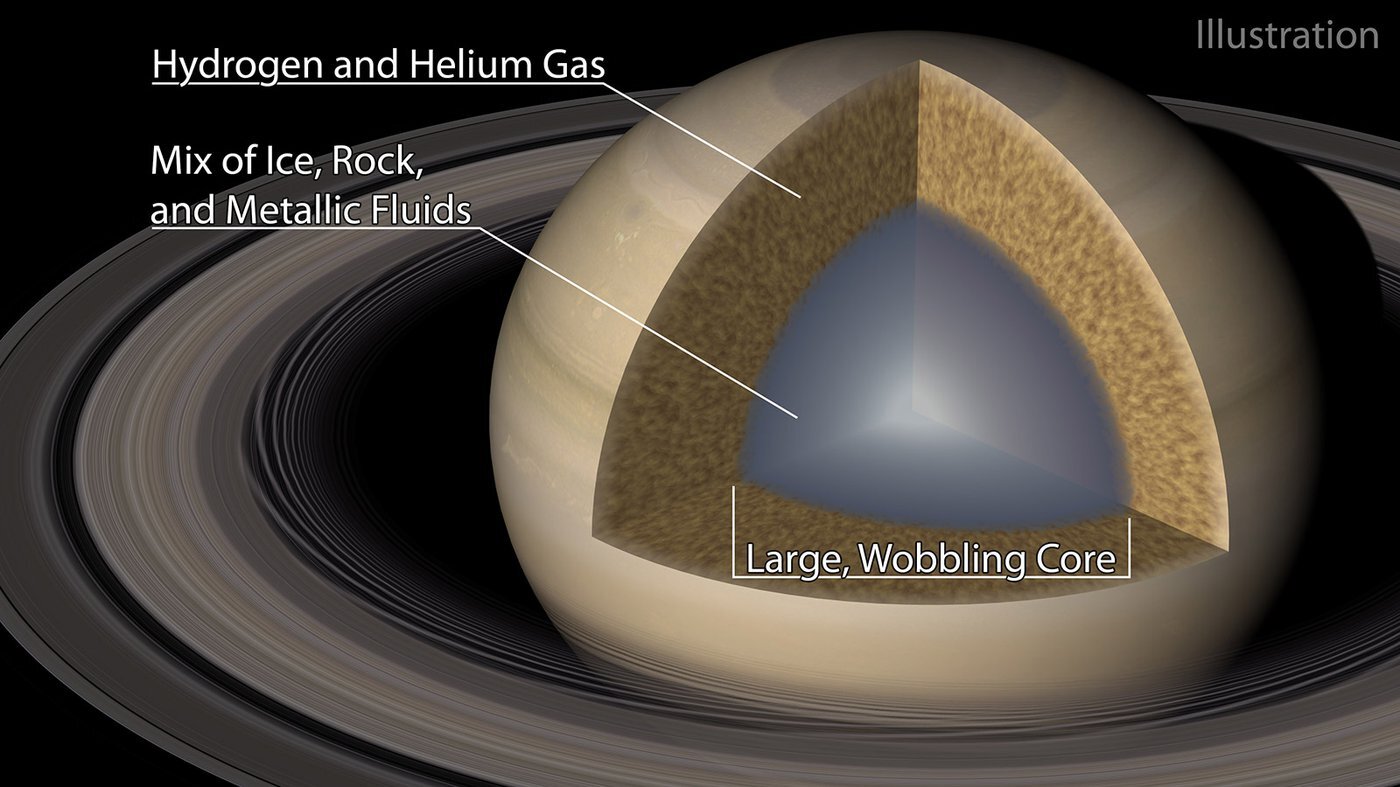
Well, perhaps fluffy is not the correct term. The press release explains: The findings suggest that the planet’s core is not a hard ball of rock, as some previous theories had proposed, but a diffuse soup of ice, rock, and metallic fluids—or what the scientists refer to as a “fuzzy” core. The analysis also reveals that the core extends across 60 percent of the planet’s diameter, which makes it substantially larger than previously estimated.”
Using data collected by the Cassini mission, the team analyzed ripples in the rings of Saturn to understand how they were caused by oscillations inside the planet itself. These jiggles were analyzed similarly to how we analyze waves that move through Earth after an earthquake. This evidence lines up with results from NASA’s Juno mission that also indicates Jupiter has a similarly fuzzy core.
Lead author Christopher Mankovich goes on to explain: The fuzzy cores are like a sludge. The hydrogen and helium gas in the planet gradually mix with more and more ice and rock as you move toward the planet’s center. It’s a bit like parts of Earth’s oceans where the saltiness increases as you get to deeper and deeper levels, creating a stable configuration.
Mankovich also notes: Saturn is always quaking, but it’s subtle. The planet’s surface moves about a meter every one to two hours like a slowly rippling lake. Like a seismograph, the rings pick up the gravity disturbances, and the ring particles start to wiggle around.
All this is pretty impressive for looking at waves in the rings.
We often try to find themes that allow us to smoothly transition from one story to another. Today, there are no themes. There is just science, which I guess is a theme? Anyway, from the mantle of the Earth to the inner workings of Saturn, we now jump out to a star-forming region that is filled with the same kinds of short-lived radioactive elements that enriched the volume where our own solar system formed.
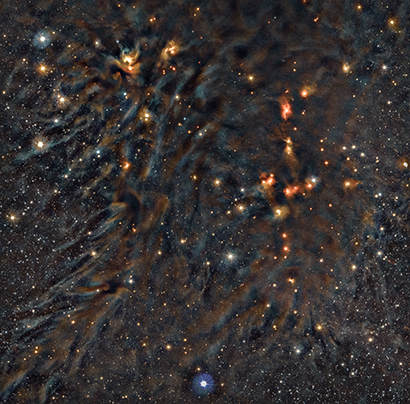
In our own solar system, we know this past enrichment occurred because of the compositions of meteorites that preserve the original mix of elements, or in the case of radioactive elements, they preserve the resulting elements from the decay of that original mix.
In a new paper appearing in Nature Astronomy, astronomers used a suite of telescopes to study the Ophiuchus Star-Forming region. This data set included spectacular new infrared data that highlights how material from nearby young stars is able to mix into the newly forming systems. These images indicate that supernovae in the nearby system create these radioactive elements, and the winds of both the exploding star and also from massive stars like Wolf-Rayet stars together transport these materials from the young star cluster to the star-forming region.
According to co-author Douglas N. C. Lin: Our solar system was most likely formed in a giant molecular cloud together with a young stellar cluster, and one or more supernova events from some massive stars in this cluster contaminated the gas which turned into the sun and its planetary system.
Astronomers have long suspected this happened, but this data marks the first time we’ve seen observational confirmation that this theory matches reality.
Slowly, slowly, we’re starting to understand planetary formation.
Has everyone been enjoying the Perseids meteor shower this year? I know there are a lot of sky issues with rain (for people who still get rain) and smoke, but I have seen some great astrophotography images on Twitter. There were also a couple of reports of large outbursts from several monitoring systems, including SETI Institute’s Cameras for All-Sky Meteor Surveillance program. The shower is still going despite being past its peak, so please continue to try and do some meteor watching.
What causes a meteor shower? When comets pass through our inner solar system, they are heated up by the Sun, and the closer they get, the more they shed their icy particulates and dust. Those particles all stay in the same orbit as the comet, although they trail behind a bit. And if Earth’s orbit ever crosses the orbit of those particles, they hit our atmosphere and burn up on entry, creating the bright streaks we see during meteor showers. Some will even be slightly bigger pieces that create bright fireballs.
Since we can track these meteors back to their orbits based on how they hit the atmosphere and the direction they came from, we can track them back and possibly determine the comet that left the dust trail. We call this comet, as it relates to a meteor shower, the parent body. For the Perseids, the parent body is Comet Swift Tuttle, which was discovered in 1862 and orbits the Sun every 133 years in an elliptical orbit.
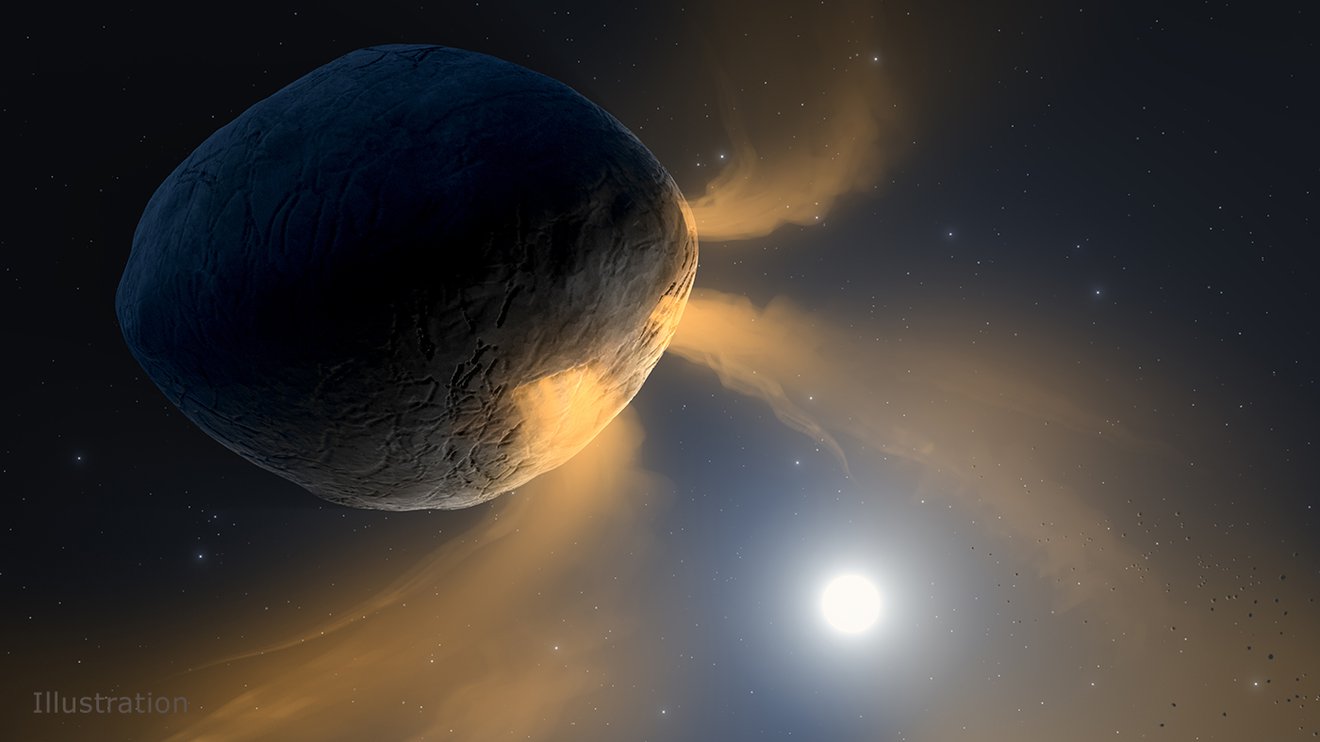
Of course, the Perseids aren’t the only big meteor shower we get to see throughout the year. Coming up in December, we will have the Geminids meteor shower. Now, the parent body of this particular shower is really interesting as it’s not a comet. I know. I said comets are what cause meteor showers, but this is that one exception to the rule. The Geminids are caused by asteroid 3200 Phaethon, and this strange exception is one that has sent scientists looking for reasons why.
Phaethon is what is known as a dead comet, although the new term gaining traction is “rock comet”. Phaethon also has an elliptical orbit and only takes 1.4 years to go around the Sun. And it brightens significantly as it gets closer to the Sun. But it’s a rock, right? How is it brightening that much and giving off enough dust to make a trail worthy of one of the best meteor showers? The answer, provided by new research published in the Planetary Science Journal, is possibly sodium.
Per the press release: The researchers think that as the asteroid approaches the Sun, its sodium heats up and vaporizes. This process would have depleted the surface of sodium long ago, but sodium within the asteroid still heats up, vaporizes, and fizzes into space through cracks and fissures in Phaethon’s outermost crust. These jets would provide enough oomph to eject the rocky debris off its surface. So the fizzing sodium could explain not only the asteroid’s cometlike brightening but also how the Geminid meteoroids would be ejected from the asteroid and why they contain little sodium.
To test this sodium hypothesis, the team tested samples of the Allende meteorite, which landed in Mexico in 1969. Allende is a carbonaceous chondrite meteorite, similar in composition to Phaethon and other asteroids formed early in the history of the solar system. Chips from this meteorite were heated to temperatures similar to what Phaethon would experience at its closest approach to the Sun, and the team found that the sodium had been lost while other elements remained behind.
This new research is further evidence that it’s time to rethink how we categorize comets and asteroids, just as we have had to rethink what a planet is. Our categories are oversimplified.
Looking for life on Mars is a complicated problem. We worry that if we rove up to any life on Mars, we’ll accidentally kill it with germs on our rovers. We worry that life may exist in places other than where we happen to be looking, so even if we don’t see life that doesn’t mean there isn’t life.
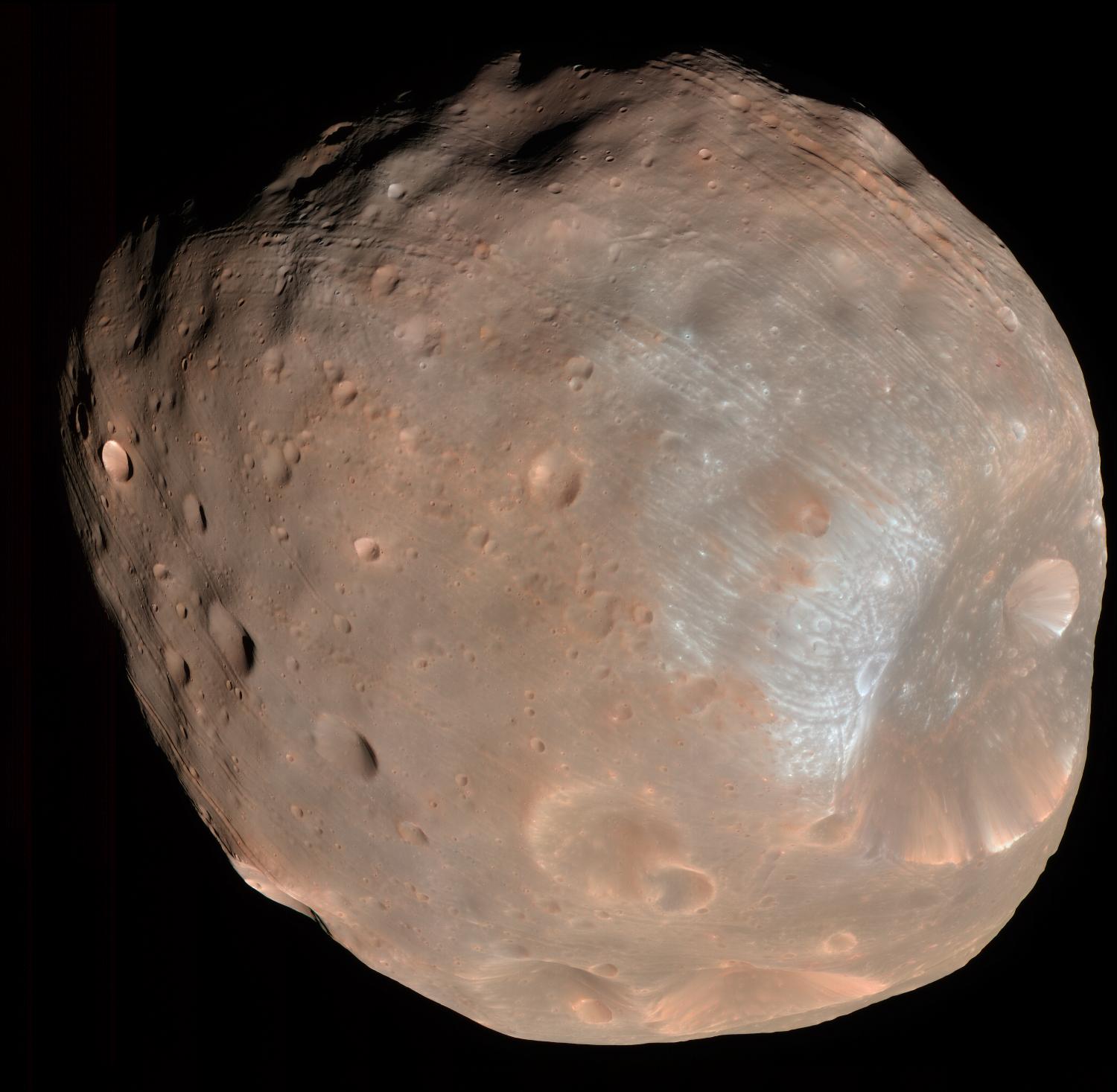
Ideally, we want a way to look for life in as many different places as possible, and we want to look for life in a way that doesn’t potentially contaminate life in a way that causes a Martian genocide.
If this seems like an impossible task, it just might be if you confine yourself to looking for Martian life on Mars. In a new paper in Science, researchers Ryuki Hyodo and Tomohiro Usui describe how the regular impact of asteroids into Mars’ surface has launched martian rocks into space.
We periodically get these rocks crashing into Earth, and Mars’ moons Phobos and Deimos should have been regularly hit over and over. They suggest that if we can send missions to these moons, they will be able to study the Mars rocks that have impacted the moons and look for life in those rocks. This allows a rover to sample rocks from all over Mars on one small moon, and we shouldn’t have to worry about killing off any present-day life since we’re not going to be anywhere near that life.
Unfortunately, we won’t immediately be able to sort out where on Mars any life-containing meteorites may have originated, but if we find life from Mars in rocks on one of these moons, we know we have to search Mars far and wide.
The question of life on Mars is made all the more frustrating by our understanding that Mars once was a wet world with oceans, rivers, and warmer temperatures. If Mars was able to have all the things necessary to life and we don’t find any evidence for life, it hints that life doesn’t form easily but doesn’t necessarily prove anything. If we find evidence of past life absolutely everywhere, it means life does form easily. And if we actually find life, that means that life does find a way, even on a desert world like Mars.
The surface water that once graced Mars’ surface seems to have literally blown away in the wind. Well, more like in the winds: the wind of Mars and the solar wind.
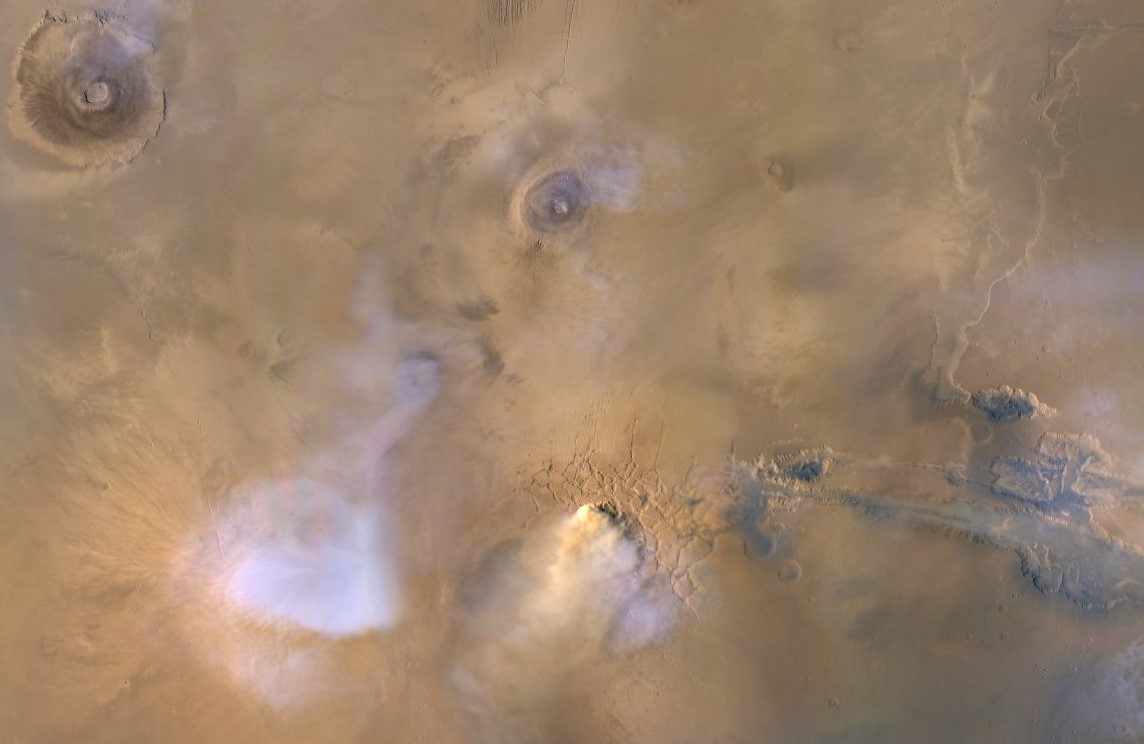
Dust storms on Mars can drive low-altitude water vapor and humidity to the upper layers of Mars’ atmosphere. Once there, ultraviolet light from the Sun is capable of breaking apart water molecules into hydrogen and oxygen. Hydrogen molecules, unfortunately, don’t have a lot of mass, and in collisions with other particles, they can pick up crazy amounts of velocity. They can, in fact, be accelerated to escape velocities through collisions either with other atmospheric particles or with particles from the solar wind. Without that now-escaped hydrogen, water molecules can’t reform, and over time, Mars was literally stripped of its water.
We knew that upper atmospheric collisions could liberate lightweight particles. What we didn’t know was how water was getting lifted from the lower atmosphere to the upper atmosphere. Now we know – the answer is dust.
While dust storms on Earth don’t decimate our water the same way, we do see the same kind of loss of lightweight particles. Helium is the one that is most worrisome.
Helium is often liberated during different mining processes, and then used for a variety of tasks, including the cooling of medical and scientific equipment. When that helium is released into the atmosphere instead of carefully captured and reused, the helium is able to accelerate to escape velocities through collisions. This means that all that helium that escaped from party balloons literally escaped the Earth. Helium is a non-renewable resource and it’s possible that someday, we’re going to run out of helium here on Earth. So, maybe don’t have helium party balloons?
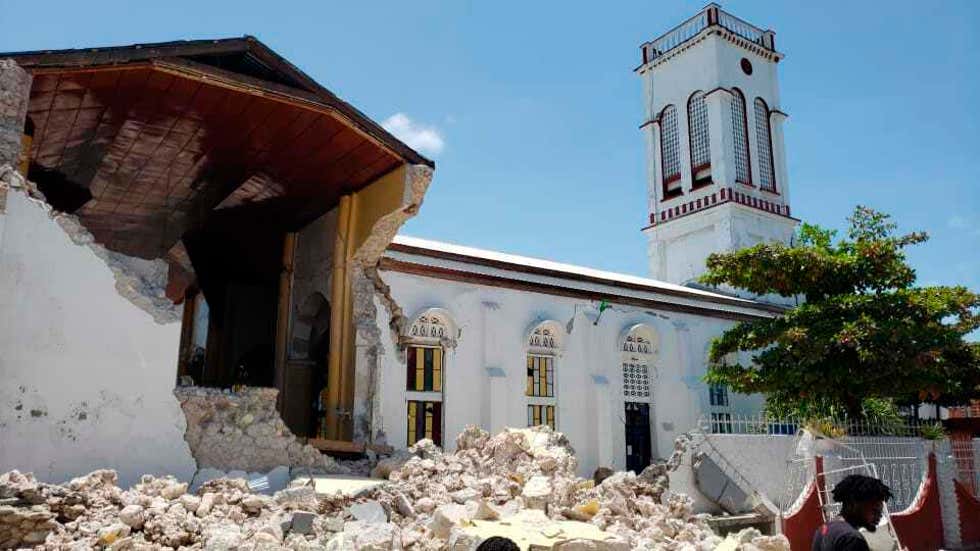
This weekend, not a lot of good things were in the news. Among the headlines was news that, on Saturday morning, a magnitude-7.2 earthquake struck near the north coast of Haiti’s southwestern peninsula. While this kind of an earthquake might be shrugged off by the populations of Japan or California, the stone and plaster buildings of the impoverished island nation are prone to crumbling and collapse. In the end, it is the architecture that traps and kills.
Making things worse, Tropical Depression Grace hampered rescue efforts as it hit Monday and brough rain and wind. It’s estimated 30,000 families have been left homeless, with still-being-counted hundreds to perhaps thousands dying in collapsed structures.
This entire region is subject to regular earthquakes. In this region, the North American plate, on which Cuba is located, is moving along the Caribbean plate, which holds Haiti, the Dominican Republic, and Puerto Rico. This movement isn’t smooth and continuous but instead occurs in sudden slips that are experienced as quakes.
To me, part of the heartbreak of this story is that the loss of life was at least partly preventable. In wealthier countries, higher building standards and phone-based earthquake alert systems work to both keep buildings standing better and make it possible for people to potentially get under cover fast enough to make a difference.

Earthquake waves move slowly through the ground, and being able to detect quakes as they start and communicate that information digitally at the speed of light is a goal. Now, Chinese researchers have found a way to actually use light to measure earthquakes.
In new research from the University of Science and Technology of China, researchers looked at how communications signals in fiber optics cables are affected by the stress and stretching of earthquakes. They were able to successfully detect earthquakes ranging from 2.3 to 6.6 magnitude. Since they were using everyday communications fiber optics, this technique should be deployable around the world. Potentially, this kind of setup will make earthquake detection a side effect of everyday communications.
Until then, this has been the Daily Space.
Learn More
Volcanoes Eject Pure Mantle Samples in Bali
- Lava from Bali Volcanoes Offers Window into Earth’s Mantle (Eos)
- “Sunda arc mantle source δ18O value revealed by intracrystal isotope analysis,” Frances M. Deegan et al., 2021 June 24, Nature Communications
Saturn’s Fluffy Core Makes Waves in the Rings
- Caltech press release
- “A diffuse core in Saturn revealed by ring seismology,” Christopher R. Mankovich and Jim Fuller, 2021 August 16, Nature Astronomy
Radioactive Materials Mixed Into Baby Planets
- UCSC press release
- “A Solar System formation analogue in the Ophiuchus star-forming complex,” John C. Forbes, João Alves, and Douglas N. C. Lin, 2021 August 16, Nature Astronomy
Asteroid Phaethon May Be Losing Sodium As It Heats
- NASA JPL press release
- “Volatility of Sodium in Carbonaceous Chondrites at Temperatures Consistent with Low-perihelion Asteroids,” Joseph R. Masiero et al., 2021 August 16, The Planetary Science Journal
Martian Life May Be Trapped in Rocks on Mars’ Moons
- The search for life on Mars expands to studying its moons (Phys.org)
- “Searching for life on Mars and its moons,” Ryuki Hyodo and Tomohiro Usui, 2021 August 13, Science
Dust Storms Dry Out Mars
- NASA Goddard press release
- “Martian water loss to space enhanced by regional dust storms,” M. S. Chaffin et al., 2021 August 16, Nature Astronomy
Haiti Shaken by Transform Plates
- Haiti Earthquake Kills Hundreds (Weather.com)
- Haiti Earthquake Death Toll Soars Above 1,400 as Grace Brings Rain to Affected Areas (Weather.com)
Detecting Earthquakes in Light
- USTC press release
Credits
Written by Pamela Gay and Beth Johnson
Hosted by Beth Johnson
Audio and Video Editing by Ally Pelphrey
Content Editing by Beth Johnson
Intro and Outro music by Kevin MacLeod, https://incompetech.com/music/


 We record most shows live, on Twitch. Follow us today to get alerts when we go live.
We record most shows live, on Twitch. Follow us today to get alerts when we go live.